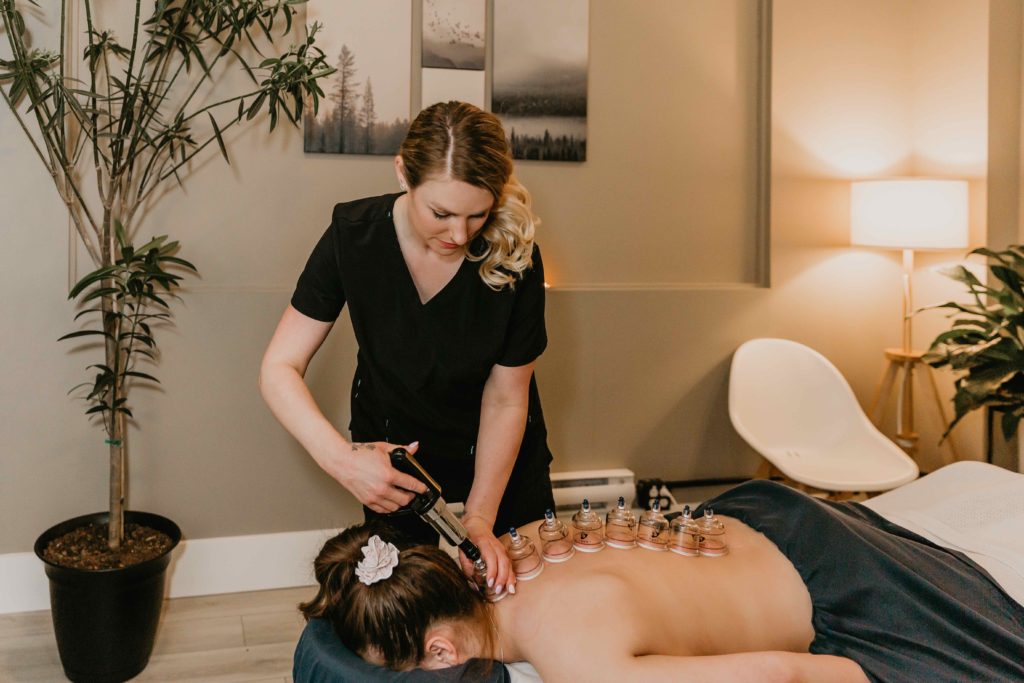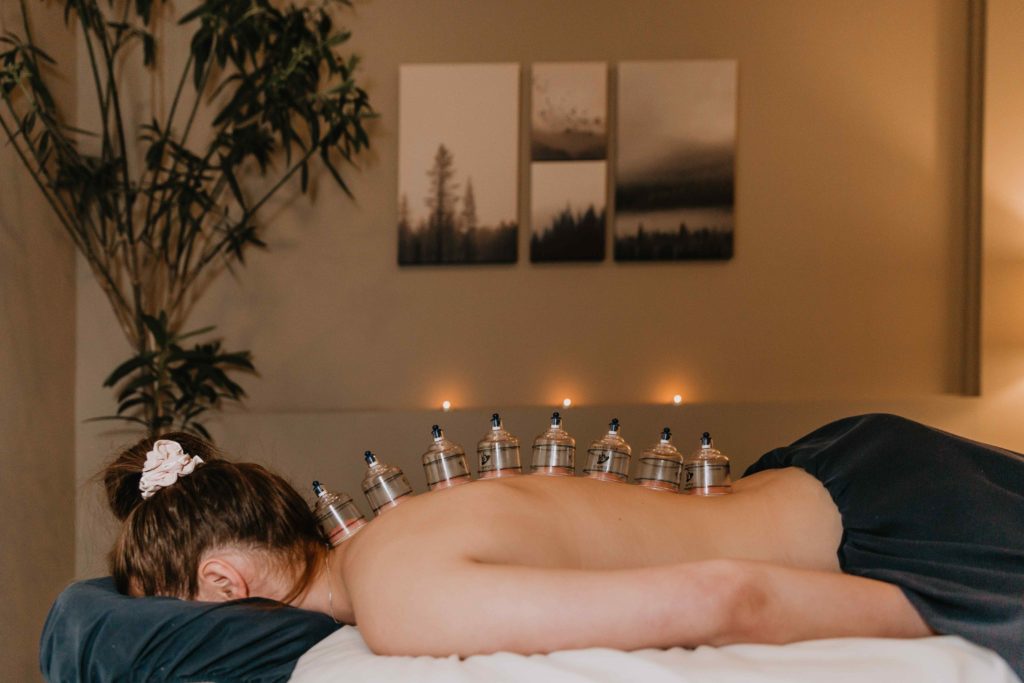During sports seasons and the Olympics, chances are, you can catch glimpses of cupping marks on your favourite athletes. It’s a practice that’s been around for thousands of years, but massage therapists and other practitioners adopt it today alongside their modern treatments.
Myofascial cupping is a soft tissue treatment that uses cups to create a negative pressure, vacuum-like seal on the skin to stimulate the connective tissues beneath.
While many like to show off their cupping marks as a badge of honour, you may be left wondering, what is myofascial cupping, exactly? How does it work? And what are the benefits?
What Is Myofascial Cupping Therapy?
Myofascial cupping encourages the healing of soft tissue and connective tissue, known as fascia, by stimulating blood circulation to the surface of the skin. The treatment supports manual massage by helping to release muscle restriction and tension. Your massage therapist can find locations of restriction and use cups to break up fascial adhesions, stubborn knots, and tension.
Manual treatments like massage therapy focus on compression pressure, using deep tissue techniques to improve mobility. The negative pressure isn’t something that can be achieved through manual therapies, so introducing cupping to treatment can reduce swelling, discomfort, and chronic pain and stimulate the lymphatic system.
Stationary Cups vs. Gliding Cups
Whether your practitioner uses glass or plastic cups, they can implement 2 popular techniques: stationary cupping or gliding cups.
Stationary cups are applied to treatment zones and are left untouched for up to 15 minutes to promote healing in scar tissue, break up adhesions, and increase your range of motion.
Gliding cups are used with ointment or lotion to the skin, and your practitioner gently slides the cups along the treatment area. This variety of cupping is typically used along large muscle planes, like on the back, hamstrings, quads, or calves. Gliding the cups can stimulate lymphatic drainage of stagnant tissue and fluid and support natural circulation.
During a cupping treatment, your practitioner may use stationary cups, gliding cups, or a combination of both depending on your injuries, tension, or stiffness.
What Can Myofascial Cupping Treat?
Myofascial cupping is a versatile treatment technique, and while some like cupping therapy for further relaxation, it can also offer profound relief for various conditions, such as:
- Muscle stiffness and tightness
- Headaches
- Piriformis syndrome and sciatica
- Knee pain
- IT band pain
- Rotator cuff injuries
- Plantar fasciitis
- Carpal tunnel syndrome
Practitioners use a variety of cup sizes—from small cups to target intricate neck, wrist, foot, and ankle muscles, to large cups to focus on glutes and legs—to reach almost all tissue in the body.

The Benefits of Myofascial Cupping
You can expect multifaceted benefits from myofascial cupping therapy, such as:
- Encouraging the parasympathetic nervous system response for relaxation
- Moving stagnations of lactic acid and uric acid to support normal lymphatic flow to promote healthy circulation
- Passively stretching soft tissue
- Reducing tension
- Preventing fibrosis, or scar tissue, and reducing localized inflammation
- Draining cellular debris
- Separating layers of connective tissue to release tight muscles
- Increasing joint range of motion and flexibility
Does Cupping Hurt?
Many people look at cupping marks and assume that the treatment must hurt, but the most common sensation people experience is a suction sensation that may have an initial sting but wears off quickly. After you become accustomed to the sensation, it often becomes relaxing, and you can feel the tension melt away.
What Are Cupping Marks?
Once you stand from the massage table, you’ll want to look at the aftereffects: your cupping marks. Circular marks on the treatment area are expected and can appear in varying shades, from yellow to red or dark purple.
Some people love seeing the dark purple shades because many believe the darker the mark, the more toxins have been drained away. Even if you have little to no discolouration, you can still experience the same benefits of the treatment.
Add Myofascial Cupping to Your Next Massage Treatment
As a supplementary treatment during a massage, cupping therapy can offer additional benefits to support natural healing. Talk to your practitioner about adding cupping to your next treatment.
Recovery Lab has a team of therapists to assess your overall health and treatment plan to determine whether you’ll benefit from myofascial cupping. Contact us to schedule your appointment with our skilled practitioners for injury rehabilitation, relaxation treatments, or preventative therapy to keep your body moving in a functional way.



